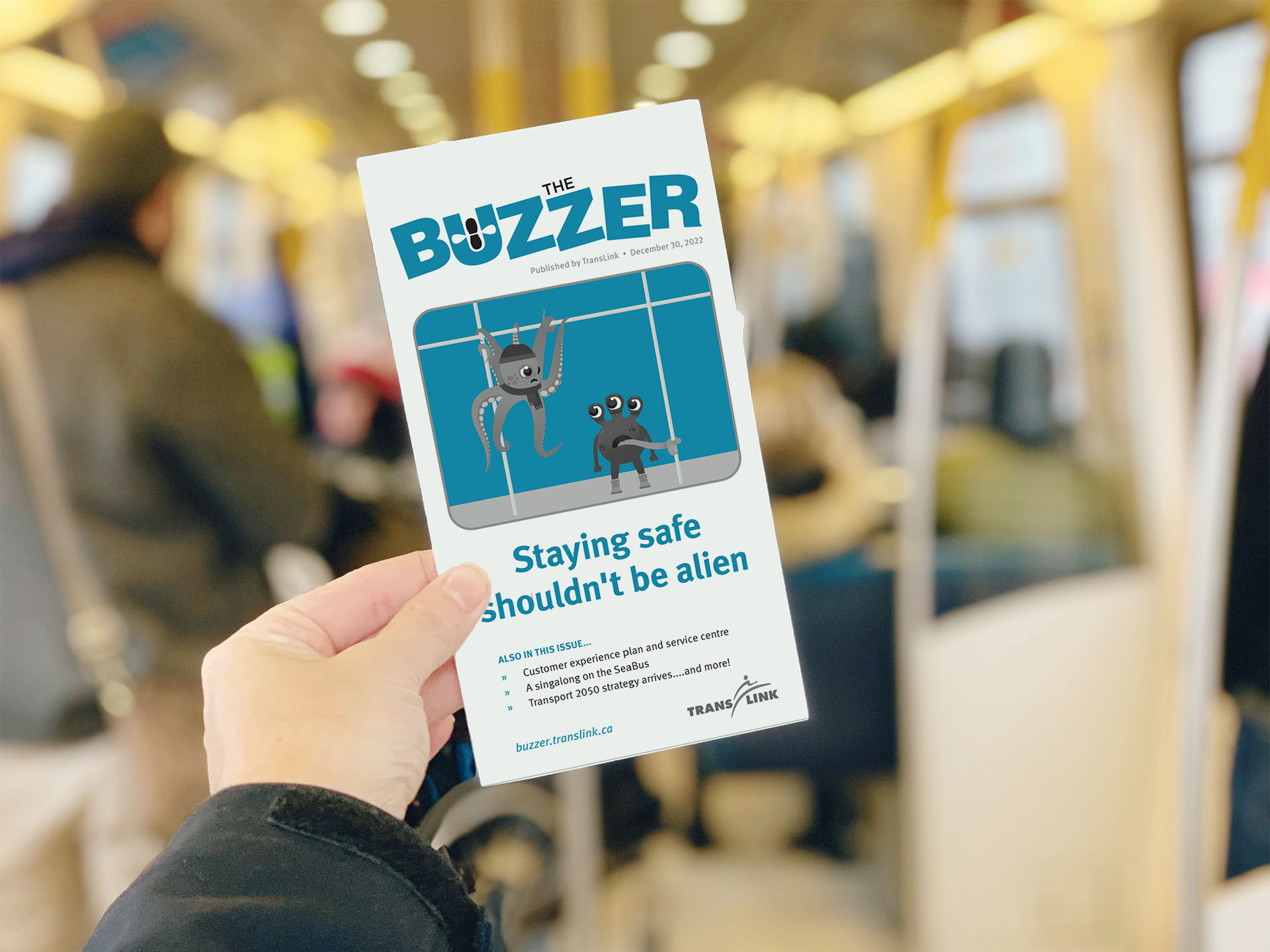The December 2022 issue of The Buzzer is now available online
The December 2022 issue of The Buzzer is now available online

As another year draws to the close, we bring you this year’s issue of The Buzzer — available for download, online.
We recap a few of the most important plans TransLink completed in 2022, which included the Climate Action Plan and the new Customer Experience Action Plan, as well as the adoption of the Transport 2050 strategy. These serve as a launchpad for 2023 and beyond as we respond to the climate emergency, continue to elevate the customer experience, and make transportation better for everyone.
Other stories include the new TransLink Customer Service opening, a singalong onboard the SeaBus, tips for staying safe when riding transit this winter, and the arrival of the new battery-electric bus.
In Back Issues, we mine The Buzzer‘s archives for interesting historical finds and tidbits. We went back May 10, 2013 for this one when the cover story was on TransLink’s role in maintaining regional roads and bridges.
Finally, complete our word search and find the secret hidden word!
The Buzzer’s history
Perhaps a little-known fact is your community managers on TransLink’s social media channels also write for the print edition of The Buzzer. We proudly continue this legacy as it publishes for its 106th year.
The first issue was published on June 2, 1916 and distributed on the streetcars that made up public transportation in Metro Vancouver at the time. It was titled, “Wanted – A Name” and offered to pay $15 for the best suggestion, $10 for the second best and $5 for the third best.
Of course, the next issue announced the winning name: The Buzzer! In total, 11 people submitted the winning name. The second-place name was “Current Comments” and in third was “Between The Lines.”
The Buzzer was the brainchild of George Kidd, general manager of British Columbia Electric Railway, which operated Metro Vancouver’s streetcar network.
He designed it as a strategic weapon in a long-forgotten battle between streetcars and “jitney” operators — private citizens who patrolled streetcar routes and offered rides for five cents. The newsletter would promote the use of streetcars by keeping people informed about service and fostering rider loyalty. Jitney service was abolished about two years later in July 1918, but The Buzzer continued. This blog launched in 2008.





